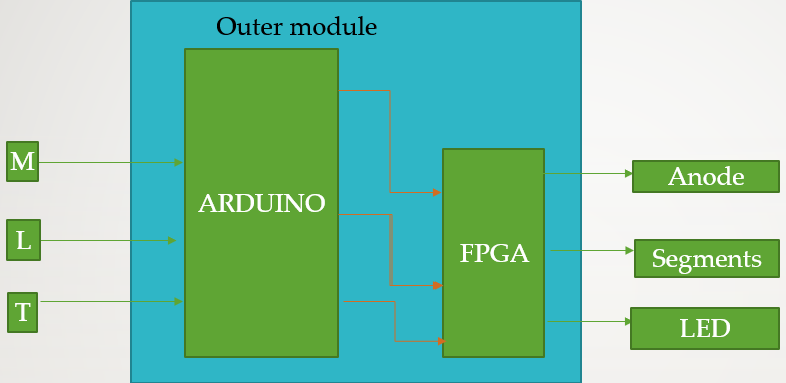The goal of this project is to develop a smart monitoring and watering system for plants that records various factors that help plants survive. The idea behind this is to use FPGA and hence a hardware description language (HDL) along with the sensors that collect data in accordance with the change of weather and soil moisture levels. The project also provides the future scope of maintaining a gardening system precisely using FPGA boards and can also be deployed to understand different crop trends using different sensors.
Project Proposal
1. High-level project introduction and performance expectation
Proposal:
FPGA’s have, over the time proved their existence in automation. Along with their invasion into robotics, FPGA’s have achieved interesting part into home automation and one such case is household plant watering. To make sure that the water consumed by the plant is maximum and thus a green environment is maintained, effective irrigation is prominent as water supplies are turning polluted and scarce these days. The goal of this project is to develop a smart monitoring and watering system for plants that records various factors that help plants survive. The idea behind this is to use FPGA and hence a hardware description language (HDL) along with the sensors that collect data in accordance with the change of weather and soil moisture levels. The project also provides the future scope of maintaining a gardening system precisely using FPGA boards and can also be deployed to understand different crop trends using different sensors.
Introduction:
As someone who agonizes over the wellbeing of the plants, be it a household plant or a farmland crop, a system that monitors the health of my plant is a dream come true. Predicting the amount of water, a plant needs, always, can be difficult.
The project runs behind the basic idea of developing an FPGA system tests the soil moisture, air temperature, and light levels to water the plant when it’s needed.
The project uses an FPGA board as well as an Arduino board that acts as an analog to digital converter. There are three external devices that can be connected to the Arduino: a moisture sensor, a temperature sensor, and a light sensor.
Depending on the inputs from the sensors and the code written using the hardware description language, a decision will be given by the FPGA on when to water the plant. Another idea behind the project is to efficiently make use of the parallel execution capability of the FPGA. Unlike a normal microcontroller which can handle lesser number of plants, multiple plants or an entire set of one particular crop system may be managed using an FPGA board due to its high flexibility.
Performance Expectation: 70%
2. Block Diagram

3. Expected sustainability results, projected resource savings
Expected Sustainability Results:
- usage of a greater number of simpler micro controllers reduces, as a single, complex, and efficient board called FPGA replaces them.
- As far as sustainability results are concerned, water wastage reduces by a greater amount thus saving the water resources.
- When plants or farmland crops are under watered, it leads to the shred off of the plant parts slowly thus making the effort put on growing the plants wasted.
- On another note, if the crop is over watered, it leads to water wastage, sometimes leading to soil erosion along with the manure or fertilizers draining off with the excess of water.
- So, in such scenarios, an efficient FPGA watering system can effectively monitor on how much amount of water is actually needed for a plant and provide it. Once the water requirement is fulfilled, the input stops and waits for the next time when the soil gets dried again. Thus, water wastage reduces along with the proper monitoring of the plant being achieved.
0 Comments
Please login to post a comment.